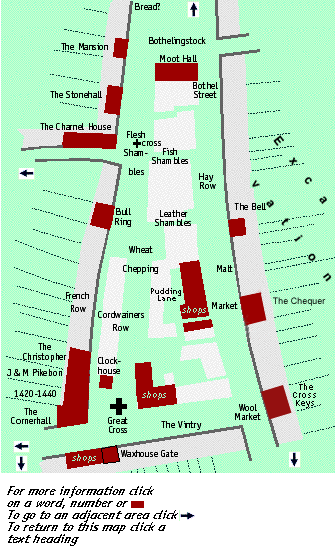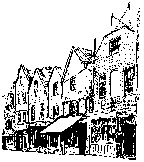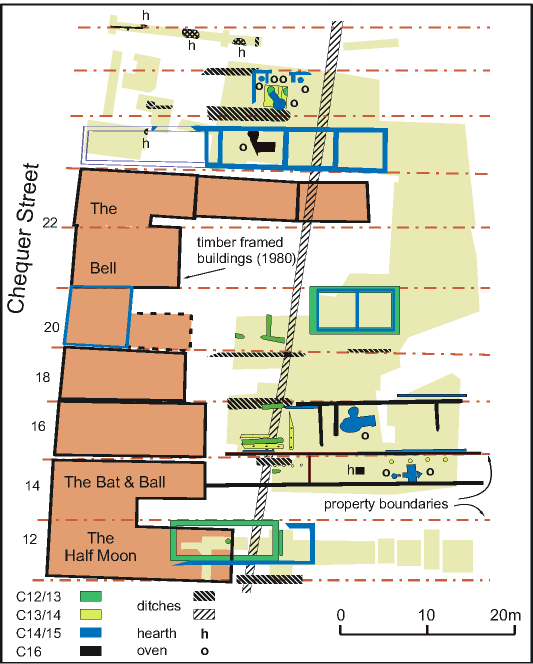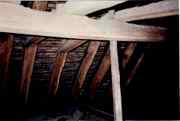

To go to the rest of the Market Place
click the appropriate part of the map
The Malt
Market
(The Eastern Side of the Market
Place)
Much of the present day Chequer Street
was by late Medieval times the Malt Market or Malt Cheaping,
with at the upper end of the street the Hay Market. At times
part of this street appears to have been included in St.
Peters Street and Haliwell Street. The present name is taken
from the medieval inn with the sign of the Chekkre
(Chequer).
On the western side of the street in the early 16th century
was the house of the Master of Spicery of the Abbey and that
of the Keeper of the Abbey Guest House and behind these some
houses belonging to the office of the Sub-Cellarer of the
Abbey.
It was between the sign of the Key
(later The Cross Keys) and the Chekkre that Warwick's troops
broke into the town in 1455 during the First Battle of St.
Albans having crossed Tonman Ditch and traversed the town's
backsides.

On the eastern side of the street a
number of timber framed buildings survive in various states.
Most of these seem to belong to the 16th century and were
probably constucted after the dissolution of the Abbey. One
certain exception is the building
which spans the carriageway which once led to Bell Yard and
now leads to the Maltings shopping centre and in that part
of the Bell immediately to the north some heavy timber in
the cellar is probably of a similar date.
On the Western side of the street a range of buildings which
existed until the early years of the 20th century seems from
photographs buildings which originated as medieval shops as
found elsewhere in the Market place.

Buildings on the Western
Side of Chequer
Street in the Early Nineteenth
Century

Chequer Street Excavations 1981-2:
Simplified Plan Showing Main Structural
Features


|





